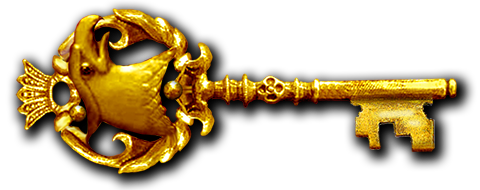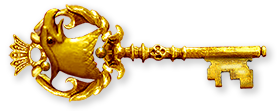
Experiment 5
Where did the nail that held up the ransom note come from?
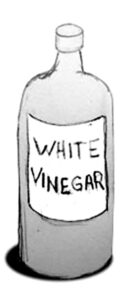 In this experiment you will discover if the nail used by the thief came from the Vinegar River flood by determining if nails soaked in a solution of vinegar, salt and dissolved copper will become copper plated.
In this experiment you will discover if the nail used by the thief came from the Vinegar River flood by determining if nails soaked in a solution of vinegar, salt and dissolved copper will become copper plated.
I. Hypothesis
Tiny amounts of copper oxide and copper will dissolve from the surface of dull, dirty pennies (or any other copper or copper-plated coin) when placed in a vinegar salt solution. Afterwards, nails soaking in the same solution that was used to soak the pennies will cause a thin film of copper to adhere to the surface of the nails.
II. Materials needed
- 6 Pennies or any copper coated or copper alloy coins such as the British Two Pence and the Five Cent Euro
- 1/4 cup (60 milliliters) white vinegar
- 1 teaspoon (5 milliliters) salt
- A clear, shallow bowl (not metal)
- 3 clean steel or iron nails (not galvanized or coated)
- Paper towels
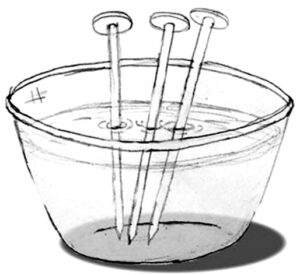 Put the vinegar and salt in the mixing bowl. Stir until all the salt dissolves.
Put the vinegar and salt in the mixing bowl. Stir until all the salt dissolves.- Pour equal amounts of the vinegar-salt solution from the mixing bowl into each shallow bowl. Label one bowl copper and the other bowl no copper.
- Dump all the coins into the bowl marked copper. Do not put any coins in the bowl marked no copper. After 20 minutes, take the coins out of the liquid and place them on a paper towel to dry. Do the coins look any different than when you first put them into the solution?
- Place three nails into the bowl labelled copper by leaning the nails against the side of the bowl so that only part of each nail is in the liquid. ( see picture) Do the same for the bowl marked no copper.
- After an hour, look at the nails. Are they two different colors? Leave the nails in both bowls overnight and check them again in the morning. Did the nails in the bowl labelled no copper change? How about the nails in the bowl labelled copper? Based the description in the story, do you think the nails in either of the bowls look like the nail that was used to post the note on the oorgave cactus?
Now that you have completed this experiment and compared your observations with other detectives’ results, what can you deduce about where the nail that was used to hold up the ransom note?
Everything around you is made up of tiny particles called atoms. The copper of a penny (or any other copper alloy coin) is made up of copper and other atoms.
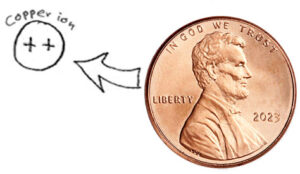
Your vinegar and salt solution is a weak acid. When you put your coins in the vinegar and salt solution, the copper starts to dissolve. This means some copper atoms leave the coins and start floating around in your solution. But when these copper atoms leave the coin, they leave two of their electrons behind. These copper atoms, which are missing some of their electrons are called copper ions. Because copper ions are missing negatively charged electrons they are positively charged.

Steel nails are a metal made by combining iron, other metals, and carbon. As you found out with your coins, your mixture of salt and vinegar is really good at dissolving metals. When you put the steel nails in the mixture, some of the iron dissolves. Like the copper atoms, each iron atom that dissolves leaves two electrons behind. This means that both positively charged copper and iron ions are floating around in your vinegar salt solution.
Originally, the steel nail was neutrally charged, but when the positively charged iron ions left the nail, the nail became negatively charged. This is because the nail is now made up of more negatively charged particles than positive charged particles.

Negatively charged particles attract positive charged particles like a magnet. The negatively charged nail attracts positive charges in the liquid. Both the iron ions and the copper ions are positively charged. The copper ions are more strongly attracted to the negative charge than the iron ions, so they stick to the negatively charged nail, forming a coating of copper on the steel.
Metal plating has been done for hundreds of years. Today, most plating uses electricity to change the charges of metal to hasten the process for industrial use. Jewelry, cutlery and coins typically use plating to give an “expensive” finish to an inexpensive metal. Galvanized metal is an example of a zinc coating on iron or steel to prevent it from rusting.
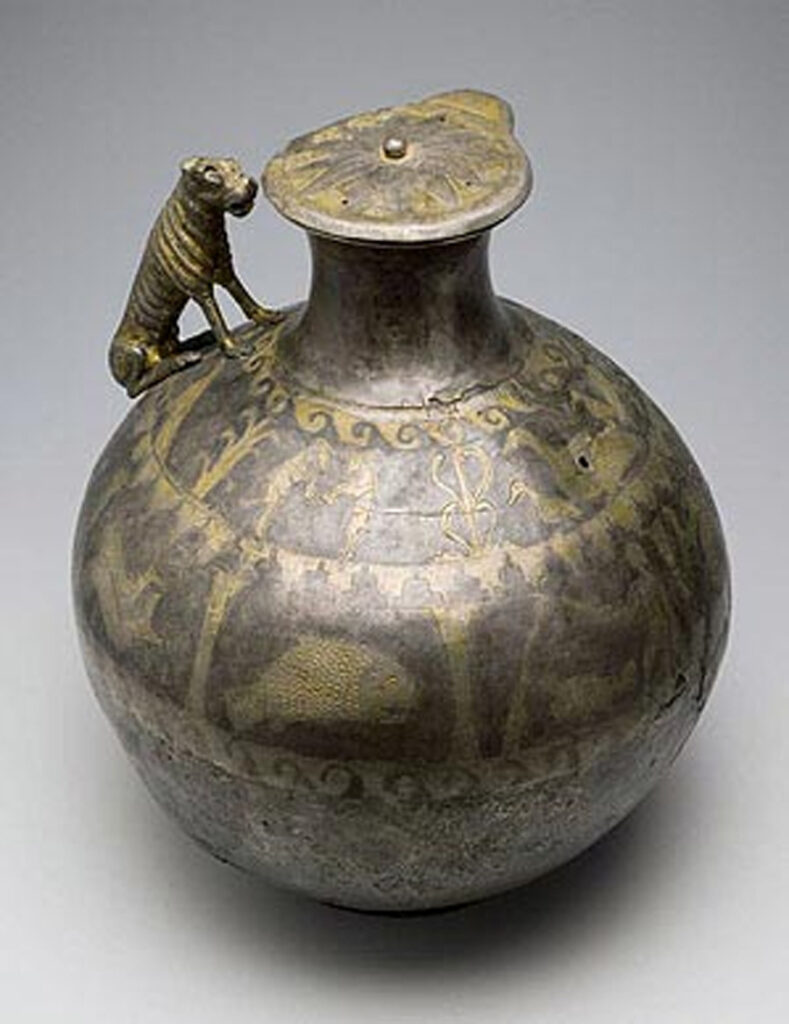 Jar
Jar
1st century A.D.
silver, gold-plating
Rostov Region, Azov District, Village of Vysochino
Vysochino-7 burial site. Barrow No. 28, Crypt 2
Azov Museum of History, Archaeology and Paleontology
